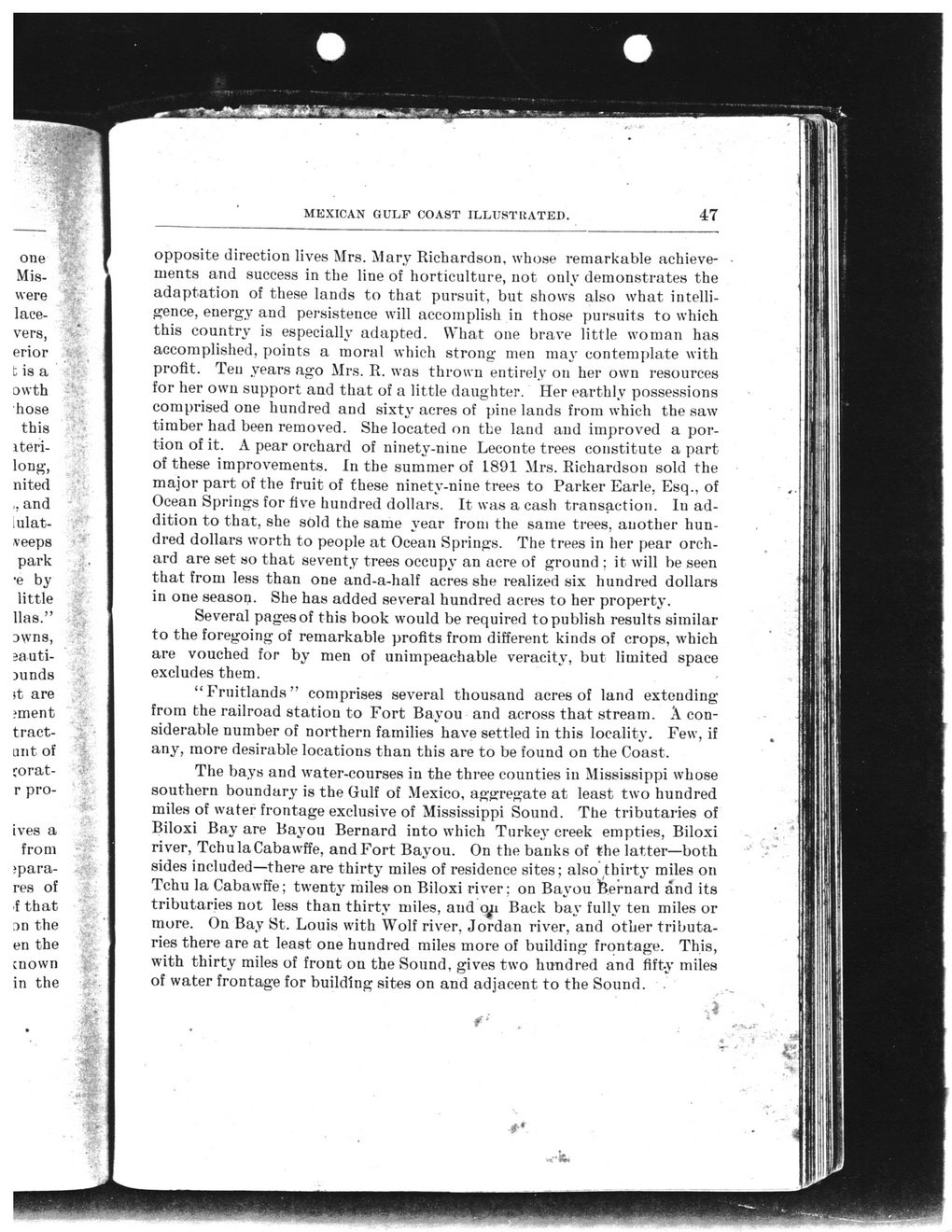This text was obtained via automated optical character recognition.
It has not been edited and may therefore contain several errors.
MEXICAN GULF COAST ILLUSTRATED. 47 one Mis-vvere lace-vers, erior t is a owth hose this iteri-long, nited ., and iulat-veeps park ■e by little lias.” Dwns, jauti-Dunds jt are >ment tr actant of rorat-r pro- ives a from ;para-res of •f that 3n the en the mown in the *■' I £• % H M . 7, m M opposite direction lives Mrs. Mary Richardson, whose remarkable achievements and success in the line of horticulture, not only demonstrates the adaptation of these lands to that pursuit, but shows also what intelligence, energy and persistence will accomplish in those pursuits to which this country is especially adapted. What one brave little woman has accomplished, points a moral which strong men may contemplate with profit. Ten years ago Mrs. R. was thrown entirely on her own resources for her own support and that of a little daughter. Her earthly possessions comprised one hundred and sixty acres of pine lands from which the saw timber had been removed. She located on the land and improved a portion of it. A pear orchard of ninety-nine Leconte trees constitute a part of these improvements. In the summer of 1891 Mrs. Richardson sold the major part of the fruit of these ninety-nine trees to Parker Earle, Esq., of Ocean Springs for five hundred dollars. It was a cash transaction. In addition to that, she sold the same year from the same trees, another hundred dollars wrorth to people at Ocean Springs. The trees in her pear orchard are set so that seventy trees occupy an acre of ground ; it will be seen that from less than one and-a-half acres she realized six hundred dollars in one season. She has added several hundred acres to her property. Several pages of this book would be required to publish results similar to the foregoing of remarkable profits from different kinds of crops, which are vouched for by men of unimpeachable veracity, but limited space excludes them. “Fruitlands” comprises several thousand acres of land extending from the railroad station to Fort Bayou and across that stream. A considerable number of northern families have settled in this locality. Few, if any, more desirable locations than this are to be found on the Coast. The bays and water-courses in the three counties in Mississippi whose southern boundary is the Gulf of Mexico, aggregate at least two hundred miles of water frontage exclusive of Mississippi Sound. The tributaries of Biloxi Bay are Bayou Bernard into which Turkey creek empties, Biloxi river, TchulaCabavvffe, and Fort Bayou. On the banks of the latter—both sides included—there are thirty miles of residence sites; also thirty miles on Tchu la Cabawffe; twenty miles on Biloxi river; on Bayou Bernard and its tributaries not less than thirty miles, and cyi Back bay fully ten miles or more. On Bay St. Louis with Wolf river, Jordan river, and other tributaries there are at least one hundred miles more of building frontage. This, with thirty miles of front on the Sound, gives two hundred and fifty miles of water frontage for building sites on and adjacent to the Sound. t*

Mexican Gulf Coast The Mexican Gulf Coast on Mobile Bay and Mississippi Sound - Illustrated (46)